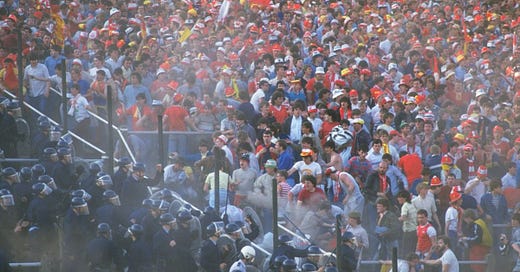On May 29th 1985, Liverpool and Juventus met in the European Cup final at the Heysel Stadium in Brussels. It was Liverpool's fifth European Cup final in nine years, having won the previous four.
At the time, and probably still today, Liverpool’s fans regarded themselves as an exception to the violent, xenophobic English stereotype of the time. They never sought to be an all-conquering army of occupation, hell-bent on intimidation and subjugation. Not in over 20 consecutive years of European competition had Liverpool’s supporters been involved in any serious violent incidents.
Yet 39 people died in the Heysel Stadium when a wall collapsed following fighting on the terraces before the match started. Most of them were Italians and supporters of Juventus but there were also four Belgians, two French and one from Northern Ireland.
Who could have guessed that all those years later, we would still be taunted for, and tainted by, Heysel. Certain rival fans still sing ‘Justice for the 39’ ‘We won it three times, without killing anyone ...’ and ‘Murderers’.
Heysel was described as “Football’s Blackest Day”, and for just under four years, it was. There is a strong sense that what happened there is unfinished business. It was and remains an anomaly.
I wrote an eyewitness account and analysis of being in Belgium during that fateful week, called ‘From Where I Was Standing’, which Paul Tomkins published and wrote the foreword for.
What I saw didn't tally with what I read and heard for days, months and years afterwards. I wrote the book to set the record straight about an event that tarred all Liverpool fans with the same brush. I didn’t think the story had been properly told. I wanted readers to question or re-examine what they know of Heysel, or think they know.
The rest of this article is for Subscribers only.
Keep reading with a 7-day free trial
Subscribe to Dynasty – The Tomkins Times to keep reading this post and get 7 days of free access to the full post archives.




